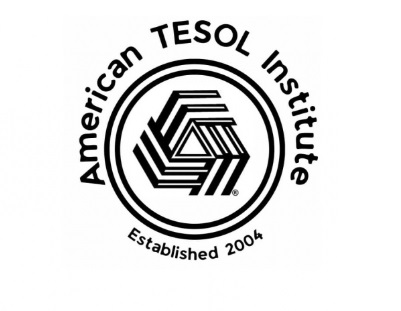Conformity and non-conformity are two fundamental social behaviors that shape human interaction and societal norms. Each carries its own set of advantages and disadvantages, making them complex and multifaceted phenomena. Effective classroom management is essential for creating a conducive learning environment where ESL students can thrive. While individuality and diverse perspectives are valuable, a certain degree of conformity is necessary to ensure structure, organization, and a shared sense of purpose. This article explores strategies for fostering conformity within the ESL classroom, while also acknowledging and leveraging the unique strengths of non-conformist learners through a lens of positive reinforcement and classical conditioning.
Establishing Classroom Norms and Expectations:
- Co-create Clear Rules: Involve students in the creation of classroom rules and expectations from the outset. This fosters a sense of ownership and shared responsibility for maintaining a positive learning environment.
- Model Desired Behavior: Consistently demonstrate the expected behaviors yourself. Your actions will serve as a powerful model for students to emulate.
- Positive Reinforcement: Acknowledge and reward students who adhere to the established norms. This could involve verbal praise, tangible rewards (stickers, small prizes), or extra privileges.
- Consistent Consequences: Implement fair and consistent consequences for non-compliance with the rules. Ensure that these consequences are logical and directly related to the misbehavior.
Leveraging Classical Conditioning:
- Pairing Stimuli: Associate positive stimuli (e.g., praise, rewards) with desired behaviors (e.g., raising hands to speak, completing assignments on time). Over time, students will begin to associate these behaviors with positive outcomes.
- Creating Positive Associations: Infuse the classroom with positive energy and enthusiasm. Use humor, games, and interactive activities to create a joyful and engaging learning environment.
- Building Community: Foster a sense of belonging and camaraderie among students. Encourage peer support and collaboration, creating a culture where conformity is valued and celebrated.
Harnessing Non-Conformist Energy:
- Recognize Individual Strengths: Identify the unique talents and perspectives that non-conformist learners bring to the classroom. Celebrate their creativity and out-of-the-box thinking.
- Offer Choice and Autonomy: Provide opportunities for non-conformist learners to express their individuality within the framework of classroom expectations. Allow for flexibility and choice in assignments and activities.
- Channel Energy into Leadership: Encourage non-conformist learners to take on leadership roles within the classroom. They can serve as peer mentors, project leaders, or organizers of group activities.
- Provide a Safe Space: Create a safe and supportive environment where non-conformist learners feel comfortable expressing their opinions and ideas without fear of judgment or ridicule.
Ethical Considerations:
It’s essential to strike a balance between fostering conformity and respecting individual differences. While positive reinforcement and classical conditioning can be powerful tools, it’s crucial to avoid manipulative or coercive tactics. Focus on creating a learning environment that empowers students to thrive academically and personally, while contributing to a cohesive and supportive community.
Conformity:
- Definition: Conformity refers to the act of aligning one’s attitudes, beliefs, and behaviors with those of a group or society. It involves adhering to established norms, values, and expectations.
- Benefits:
- Social Cohesion: Conformity fosters a sense of belonging and unity within a group, strengthening social bonds.
- Predictability: It promotes predictable behavior, making social interactions smoother and easier to navigate.
- Efficiency: In some cases, conformity can streamline decision-making and problem-solving by leveraging collective wisdom.
- Safety: Adhering to social norms can provide a sense of security and protection from ostracism or punishment.
- Drawbacks:
- Loss of Individuality: Excessive conformity can stifle creativity, independent thinking, and unique perspectives.
- Groupthink: Conformity can lead to groupthink, where individuals suppress dissent and critical thinking in favor of maintaining group harmony.
- Moral Blindness: Blind obedience to authority figures or social norms can lead to unethical or harmful behavior.
Non-Conformity:
- Definition: Non-conformity refers to the act of deviating from or challenging social norms, expectations, or established practices. It involves expressing individuality, independent thinking, and questioning the status quo.
- Benefits:
- Innovation and Progress: Non-conformity can spark new ideas, challenge outdated beliefs, and drive social change.
- Authenticity: It allows individuals to express their true selves, fostering personal growth and self-discovery.
- Critical Thinking: Non-conformity encourages individuals to question assumptions, analyze information critically, and develop their own opinions.
- Social Diversity: It enriches society by promoting a wide range of perspectives, experiences, and lifestyles.
- Drawbacks:
- Social Isolation: Non-conformity can lead to ostracism, rejection, or discrimination from those who adhere to societal norms.
- Conflict: Challenging the status quo can create tension and conflict with those who prefer stability and conformity.
- Risk-Taking: Non-conformity often involves taking risks, which may not always lead to positive outcomes.
Balancing Conformity and Non-Conformity:
A healthy balance between conformity and non-conformity is essential for both individuals and society. Conformity provides stability and social cohesion, while non-conformity drives innovation and progress.
Individuals can strike this balance by:
- Being aware of social norms: Understand the expectations of your social context but don’t feel obligated to blindly follow them.
- Thinking critically: Question information, evaluate different perspectives, and form your own opinions based on evidence and reasoning.
- Expressing your individuality: Don’t be afraid to voice your own ideas, even if they differ from the majority.
- Respecting others’ differences: Accept and celebrate diversity, recognizing that everyone has a unique perspective and a right to their own beliefs.
By balancing conformity and non-conformity, individuals can contribute to a more vibrant, innovative, and inclusive society. While the comparison between ESL classrooms and social media algorithms might seem unusual, there are some ways in which classroom environments can inadvertently foster conformity, similar to how algorithms prioritize certain types of content on social media platforms:
- Rewarding Participation and Correctness:
- Social Media: Algorithms prioritize posts that receive high engagement (likes, shares, comments), often associated with content that aligns with mainstream views or trends.
- ESL Classroom: Teachers might prioritize students who actively participate and provide correct answers, inadvertently creating a culture where students feel pressured to conform to the “right” way of thinking or speaking.
- Focusing on a Single Standard of “Correctness”:
- Social Media: Algorithms can create filter bubbles by showing users content similar to what they’ve already engaged with, reinforcing their existing beliefs and limiting exposure to diverse perspectives.
- ESL Classroom: Teachers might focus on a single “standard” English, neglecting the diversity of accents, dialects, and cultural nuances. This can make students feel like their own language varieties are less valued or “incorrect.”
- Prioritizing “Popular” or “Majority” Opinions:
- Social Media: Trending topics and popular hashtags dominate discussions, making it difficult for niche or alternative viewpoints to gain traction.
- ESL Classroom: Classroom discussions might be dominated by a few outspoken students, silencing quieter voices or those with differing opinions. This can discourage students from expressing their unique perspectives.
- Creating a Fear of “Standing Out”:
- Social Media: The fear of missing out (FOMO) and the desire for social validation can lead individuals to conform to popular trends, even if they don’t personally identify with them.
- ESL Classroom: Students might hesitate to share their ideas or make mistakes in front of their peers, fearing judgment or ridicule. This can hinder their learning and create a less inclusive environment.
How to Avoid Excessive Conformity in the ESL Classroom:
- Celebrate Diversity: Acknowledge and value the linguistic and cultural diversity of your students. Encourage them to share their unique experiences and perspectives.
- Create a Safe and Inclusive Environment: Foster a classroom culture where all students feel comfortable expressing their ideas, even if they make mistakes. Create opportunities for small group discussions or anonymous feedback to ensure all voices are heard.
- Offer Multiple Pathways to Learning: Recognize that there are different ways to learn and express oneself. Provide various activities and assessments that cater to diverse learning styles and preferences.
- Challenge Assumptions: Encourage critical thinking and analysis of information. Help students develop the skills to question assumptions, evaluate evidence, and form their own opinions.
- Emphasize the Process Over the Product: Focus on the process of learning and communication, rather than solely on achieving a “correct” answer. This can reduce the pressure to conform and encourage students to take risks and experiment with language.
By implementing these strategies, ESL teachers can create a more inclusive, dynamic, and empowering learning environment where students feel valued for their unique contributions and are encouraged to think critically and express themselves authentically.
Disclaimer: This article is intended for educational purposes only and should not be interpreted as a substitute for professional advice. Teachers should consult with colleagues and administrators to develop classroom management strategies that align with their specific context and student population.



